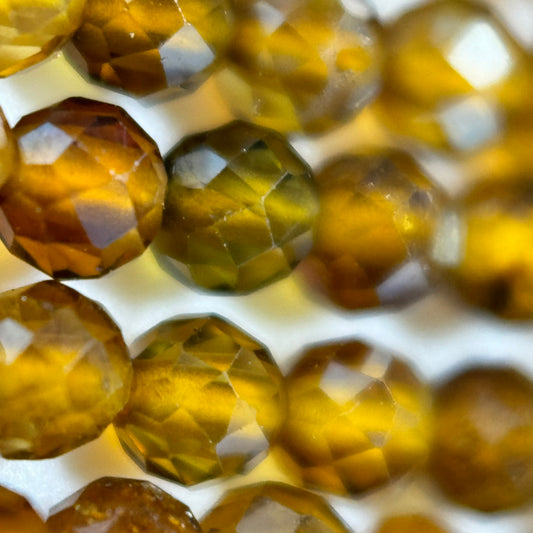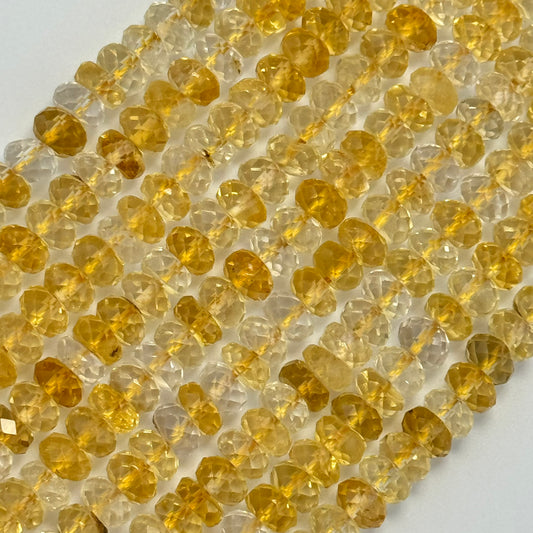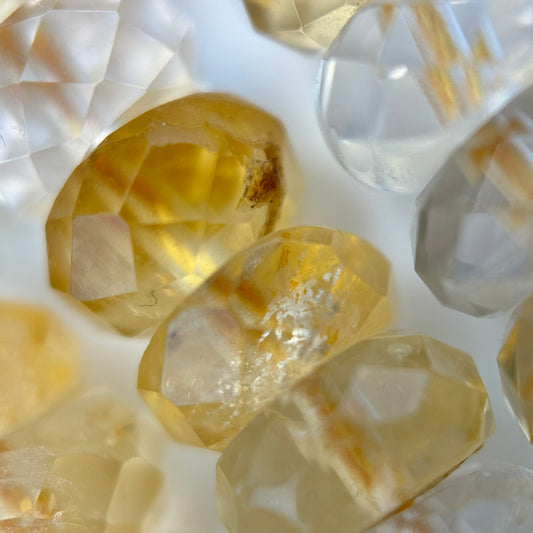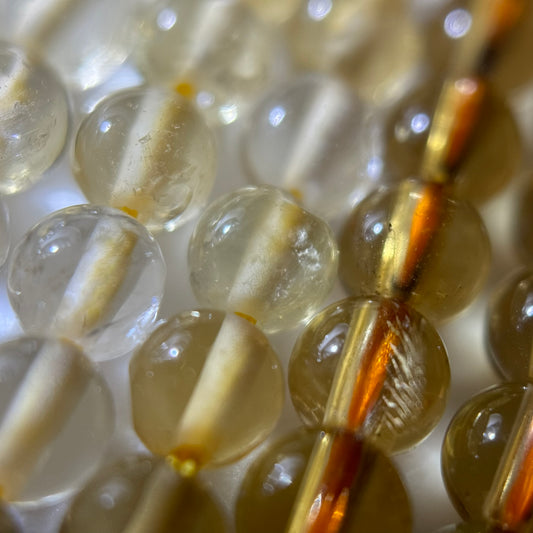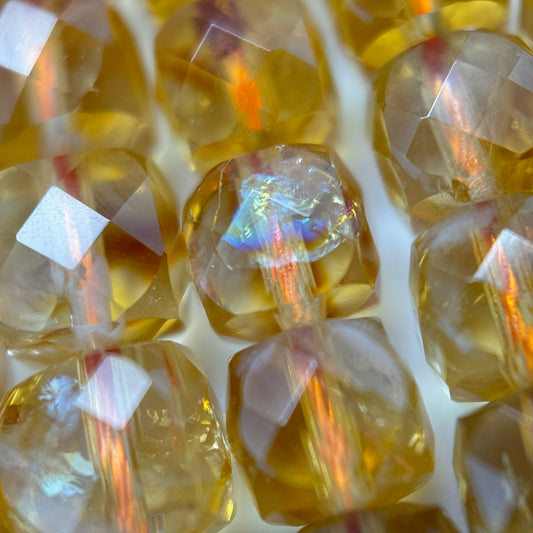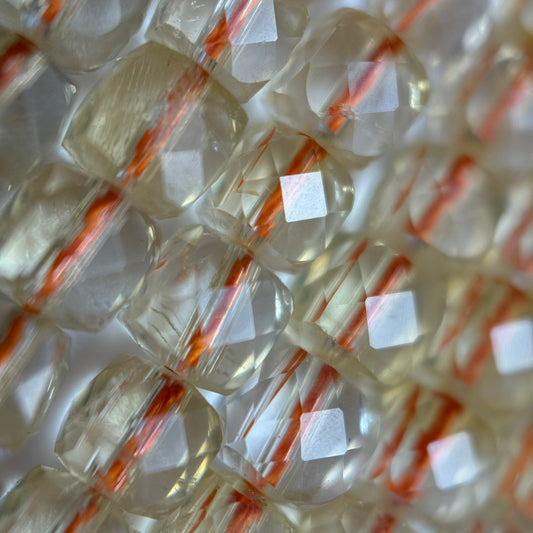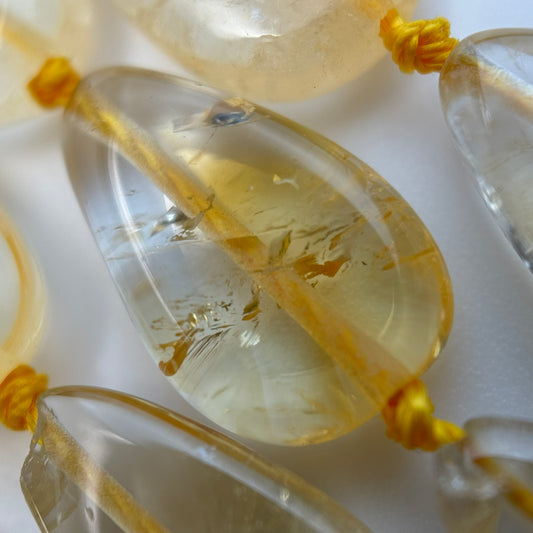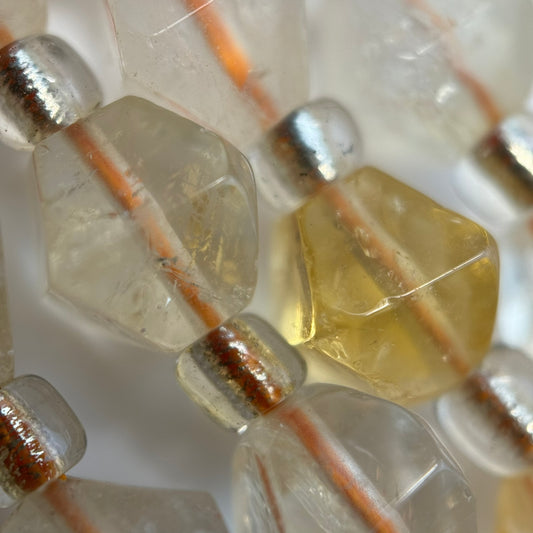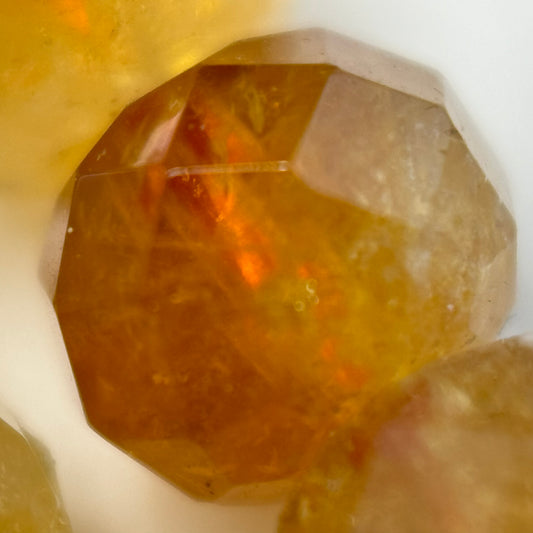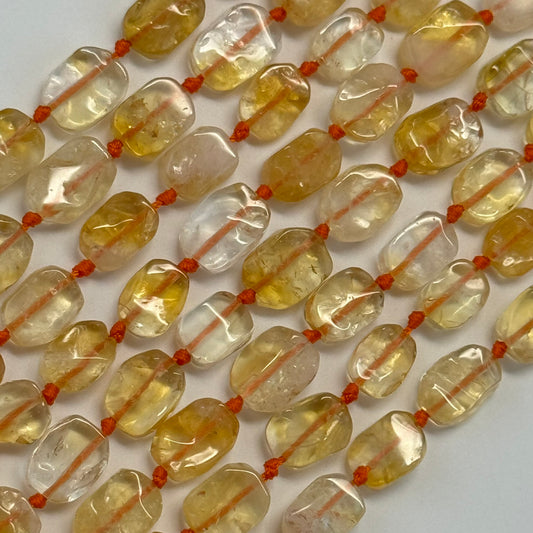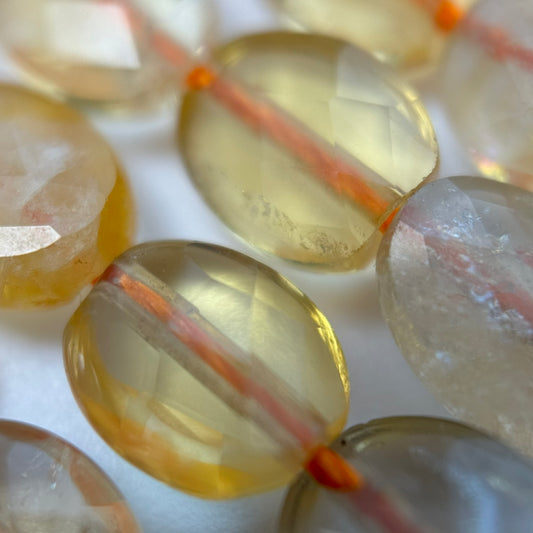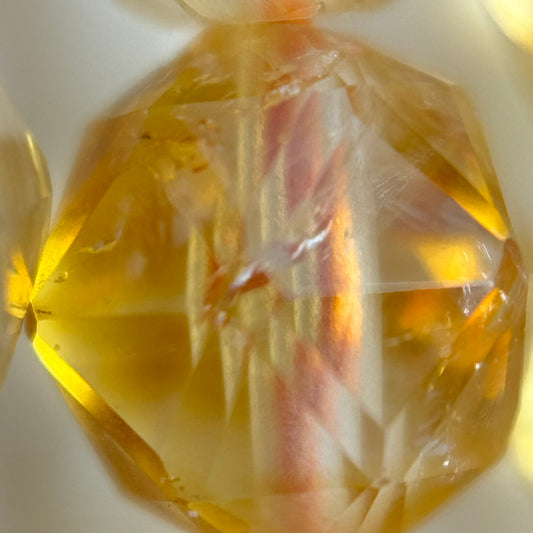Citrine Crystal Beads
Citrine
Citrine is a vibrant yellow to orange variety of quartz known for its warmth and positive energy. It is often called the "Merchant's Stone" for its association with prosperity and abundance.
Citrine Stone
The citrine stone is appreciated for its clear, sunny hues and its ability to enhance creativity, self-confidence, and motivation. It occurs naturally or can be heat-treated from amethyst or smoky quartz.
Citrine Crystal (Scientific Overview)
Citrine is a silicon dioxide mineral with a hexagonal crystal structure. Its yellow color comes from trace amounts of iron ions. It has a Mohs hardness of 7, making it durable for many jewelry applications.
Citrine Rock
Citrine rock refers to natural, uncut citrine in its raw form, often found in geodes or crystal clusters. These rocks showcase the stone's natural beauty before it is cut or polished.
Citrine Beads in Jewelry Making
Citrine beads come in various sizes and shapes, polished or matte, and are widely used in jewelry making for bracelets, necklaces, and earrings. Their golden tones complement many designs and styles.
Citrine Meaning
Citrine symbolizes success, abundance, and personal power. It is believed to attract wealth and help overcome fears and phobias, making it a popular stone for manifestation and positive thinking.
Citrine Properties
Citrine has energetic properties that promote joy, vitality, and clarity. It is associated with the solar plexus chakra, enhancing willpower and confidence, and is said to cleanse negative energies.
Citrine Crystal Benefits
Using citrine crystals is thought to increase creativity, boost self-esteem, and attract financial prosperity. It is also believed to aid digestion and improve mental clarity.
Citrine Birthstone
Citrine is the birthstone for November, making it a meaningful gift for those born in this month. It is linked to bringing happiness, health, and energy to its wearers.
Citrine Jewelry
Citrine Bracelet
Citrine bracelets showcase the stone’s vibrant hues and are worn for both their beauty and energetic benefits. They can be made from beads, cabochons, or faceted stones.
Citrine Necklace
Citrine necklaces make stunning statement pieces with their warm color, perfect for uplifting any outfit. Necklaces may feature pendants, beads, or multi-stone designs.
Citrine Ring
Citrine rings highlight the stone’s brilliance and durability, popular in both casual and formal jewelry. They are often set in gold or silver to complement the golden tones.
Citrine Earrings
Citrine earrings add a splash of sunshine to any look. Available in studs, drops, or chandelier styles, they bring warmth and positive energy close to the wearer.
Citrine Color
Citrine is renowned for its warm and vibrant color spectrum, ranging from pale yellow to deep amber. Its color is primarily due to traces of iron within the crystal structure, which gives it a golden glow reminiscent of sunlight. This bright and cheerful hue makes citrine a popular choice for jewelry and decorative pieces, symbolizing positivity, energy, and clarity.
Yellow Citrine
Yellow citrine is the most common and recognizable form of citrine, displaying rich, sunny tones that can vary from light lemon yellow to a deeper golden shade. This color variation is prized in jewelry making because it evokes feelings of warmth, happiness, and abundance. Yellow citrine is often used as a birthstone for November and is believed to attract prosperity and success.
Topaz & Citrine
Topaz and citrine are both popular gemstones often compared for their similar warm colors and metaphysical properties. While citrine displays yellow to amber hues, topaz can range from yellow to blue, pink, and other colors. Both stones are associated with abundance, energy, and creativity, making them complementary choices in jewelry designs and spiritual practices.
Quartz and Citrine
Citrine is a variety of quartz, specifically known as the yellow to orange form of quartz. Both quartz and citrine share similar physical properties, such as hardness and crystal structure, but citrine’s distinct coloration sets it apart. Quartz is often used for amplification of energy, while citrine carries the added symbolism of joy, wealth, and positive transformation.
Frequently Asked Questions
What is citrine?
Citrine is a yellow to orange variety of quartz known for its vibrant color and positive energy, often associated with abundance and creativity.
What are the main colors of citrine?
Citrine colors range from pale yellow to deep amber and orange, with hues influenced by iron content within the crystal structure.
How is citrine formed?
Citrine is naturally formed when quartz contains trace amounts of iron, or it can be produced by heating amethyst or smoky quartz to change its color.
What are citrine beads used for?
Citrine beads are widely used in jewelry making for bracelets, necklaces, and earrings, offering both aesthetic beauty and metaphysical properties.
What does citrine mean spiritually?
Spiritually, citrine symbolizes abundance, personal power, and positivity. It is believed to attract wealth and enhance confidence.
Is citrine a birthstone?
Yes, citrine is the birthstone for November and is often gifted to those born in that month for its symbolic meanings.
What are the healing properties of citrine?
Citrine is thought to boost energy, improve digestion, reduce fears, and promote mental clarity and creativity.
How hard is citrine on the Mohs scale?
Citrine has a hardness of 7 on the Mohs scale, making it a durable stone suitable for various types of jewelry.
Can citrine be used in engagement rings?
Yes, citrine's hardness and beauty make it a suitable choice for unique and vibrant engagement rings.
How should I care for citrine jewelry?
Citrine jewelry should be cleaned gently with mild soap and water, and stored away from prolonged sunlight to avoid color fading.
What chakra is associated with citrine?
Citrine is primarily linked to the solar plexus chakra, promoting confidence, willpower, and personal empowerment.
Can citrine help with financial success?
Many believe citrine attracts prosperity and success, earning it the nickname “Merchant’s Stone.”
What is the difference between natural and heat-treated citrine?
Natural citrine forms naturally with yellow hues, while heat-treated citrine is often created by heating amethyst or smoky quartz to achieve its color.
Are citrine beads available in different shapes?
Yes, citrine beads come in polished rounds, faceted cuts, and matte finishes to suit various jewelry designs.
Is citrine safe to wear every day?
Yes, with proper care, citrine is durable enough for daily wear but should be protected from harsh chemicals and impact.
Does citrine have any metaphysical properties?
Citrine is believed to cleanse negative energy, boost creativity, and support emotional balance and motivation.
Where is citrine commonly mined?
Major sources of citrine include Brazil, Madagascar, Spain, and the USA.
Can citrine fade in sunlight?
Prolonged exposure to direct sunlight can cause citrine’s color to fade, so it is best to store it away from sunlight when not worn.
What types of jewelry commonly feature citrine?
Citrine is popular in rings, bracelets, necklaces, earrings, and pendants, appreciated for its warm glow and affordability.
How can I tell if my citrine is real?
Authentic citrine typically has a warm, even color with natural inclusions; synthetic or heat-treated stones may have overly uniform color or unnatural hues.

